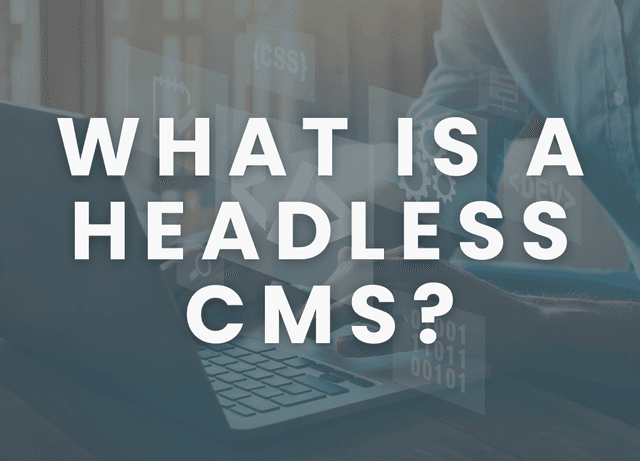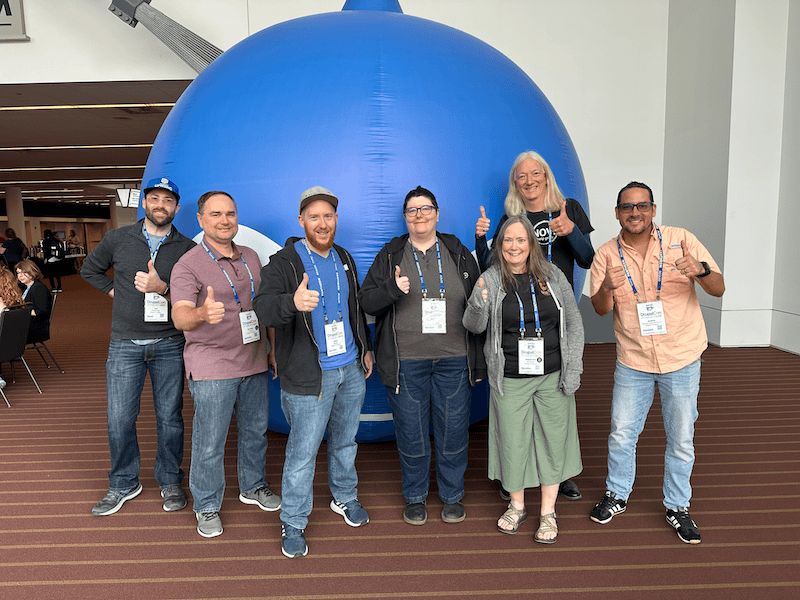Many organizations are switching to headless content management systems to streamline their content creation and sharing across marketing channels. With the increasing competition and new channels to reach consumers further segmenting the market, these companies must keep up with the trends and follow the consumers or they will fall behind their competitors.
Today we are going to answer the questions:
- What is a headless CMS?
- What are the benefits of a headless CMS?
- When should a headless CMS be used?
- What should organizations consider before switching to a headless CMS/decoupled architecture?
Learning what goes into providing consumers a consistent content experience can make the switch to headless an easy decision.
Headless CMS Explained
With a traditional CMS, the system’s head (front end) refers to where content is presented or displayed to a user. The body (back end) is where the content is created and stored.
A headless content management system refers to the backend application for creating and storing content with no front-end elements in scope. There is no built-in front-end that displays content. A headless CMS contains a back end and an API that can adapt to several front-end technologies so that organizations have the flexibility to share and display content in the most optimal way for a given channel. Organizations that use a headless CMS can present their content however and wherever they choose, increasing and optimizing user experience based on channel to maximize their content.
What Are the Benefits of a Headless CMS?
Headless CMS’s provide more flexibility
Without a predefined front end, a headless CMS offers the greatest flexibility to create and publish content. Whereas a traditional CMS publishes is more opinionated and built to present content to a single channel. The headless CMS gives users complete freedom in how they leverage content for apps and websites.
Development teams can also benefit from headless CMS’s by not locking them into a single technology for displaying content. Developers have the flexibility to update/change/add new front-end technologies/displays to their stacks without needing to worry about the complex data migration enabling them to take advantage of new and evolving technologies and channels.
Faster editing
A headless CMS typically finds content rendering occurring in another dedicated part of a stack. Faster editing can help ensure quicker creation and publication, keeping organizations current with demand and trends.
Easy to scale
Headless content management systems allow organizations to manage content from one location and then publish it to any number of relevant channels without being the limitations of a single technology/application. When more channels are discovered, organizations can mark them for content distribution.
Better security
The back end of a headless CMS is separate from any front end user experience. This creates a significantly smaller target for malicious users to attack. Security should still be a consideration no matter what platform is used, but a headless CMS/decoupled architecture helps put additional safeguards in place.
When to Use a Headless CMS
When organizations must quickly scale
Sometimes organizations need to publish their content quicker than anticipated on as many (or fewer) channels as possible. Having nearly unlimited publishing options at their disposal can increase their reach and meet expectations.
When content must be personalized
E-commerce companies often provide content to many consumers who use different apps and devices to access their stores. The openness of a headless CMS can prove beneficial in giving multi-channel consumers personal experiences that can better influence their purchasing habits.
When multiple products and services exist
Organizations that offer different products and services under their banners, like websites and voice assistants, can use headless solutions to manage all of their content for these items from a single location.
When Not to Use a Headless CMS
Some organizations will perform well with a headless CMS. Some might not. Knowing when not to use a headless CMS could save unsure organizations time and money.
When organizations only need simple publishing solutions
If a company only needs a website and/or single app, then a headless CMS might be overkill for their needs. Keeping content management simple might be the best option for cases like these to reduce overall complexity and management.
When resources are limited
A headless CMS is usually more expensive than a traditional CMS because it involves more than one type of technology/skill set to develop. IT support and the stacks themselves can be expenses companies might not afford during these uneasy economic times.
As the technology and solution providers continue to innovate, the barriers of entry are coming down. We are excited to see the innovation in this space.
Business Considerations for Switching to Headless
What should marketing and technology leaders think about before adopting a headless CMS? They should ask themselves the following questions:
- Do we have the right team. Do we have access to developers who can build and maintain the technologies needed to make a headless CMS advantageous?
- Do we have the budget necessary to take advantage of a headless CMS / decoupled architecture?
- Do we have or want different user experiences for content to accommodate different user audiences/segments (international, channels, authenticated vs anonymous, etc)?
- Do we frequently post duplicate content to multiple channels?
- How sensitive is your content - would an additional layer of security between users and your data storage be advantageous?
- Are we facing slowdowns or challenges scaling our content?
If the answer to any of these questions is “yes,” then a headless CMS might be a viable option.
Conclusion
It is clear that headless content management systems can provide significant benefits to organizations who are able to leverage them effectively. If you need the freedom to publish content among several channels, then a headless CMS / decoupled architecture could be the right solution.
Interested in exploring headless CMS/decoupled architectures? Talk to one of our decoupled solution specialists today!


